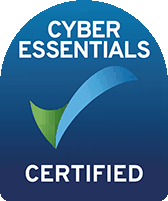At the end of March 2025, a temporary cut in Stamp Duty will end, meaning that many homebuyers will need to pay more if their purchase is not completed by then.
Stamp Duty is a tax on property purchase transactions in England and Northern Ireland. The amount payable depends on certain factors, including:
- The amount you are paying for a property
- Whether it is your first ever property purchase
- Whether you own another property and are not selling it
- Where the property is situated
- Whether you are a UK resident
We take a look at when Stamp Duty is payable and how much it is.
Why was there a Stamp Duty cut?
When Liz Truss announced her mini-budget in September 2022, the threshold above which Stamp Duty is payable in England and Northern Ireland was raised. This meant that more people were able to buy properties without the need to pay the tax and that others were required to pay less tax than usual. The tactic was part of the government’s attempt to drive economic growth.
What were the changes, and when are they ending?
The current reduced rates of Stamp Duty, in force until 31 March 2025 and applicable in England and Northern Ireland, are as follows:
| Property or lease premium or transfer value | SDLT rate |
| Up to £250,000 | Zero |
| The next £675,000 (the portion from £250,001 to £925,000) | 5% |
| The next £575,000 (the portion from £925,001 to £1.5 million) | 10% |
| The remaining amount (the portion above £1.5 million) | 12% |
A first-time buyer does not currently have to pay Stamp Duty on the first £425,000 of the purchase price. The tax is payable at the rate of 5% on the portion of the price from £425,001 to £625,000. No first-time buyer discount is available for properties costing over £625,000.
First-time buyers are individuals who have not ever purchased or owned a property before. If a property is being purchased jointly, both buyers must be first-time buyers to qualify for the reduction.
As of 1 April 2025, the following Stamp Duty rates will apply:
| Property or lease premium or transfer value | SDLT rate |
| Up to £125,000 | Zero |
| The next £125,000 (the portion from £125,001 to £250,000) | 2% |
| The next £675,000 (the portion from £250,001 to £925,000) | 5% |
| The next £575,000 (the portion from £925,001 to £1.5 million) | 10% |
| The remaining amount (the portion above £1.5 million) | 12% |
From 1 April 2025, first time buyers will not pay Stamp Duty on the portion of the price up to £300,000. The tax will be payable at the rate of 5% on the part of the price from £300,001 to £500,000. If the property costs more than £500,000, no first-time buyer reduction is available.
Second homes
If the property you are buying is a second home, such as a holiday home or investment property, you currently need to pay higher rate Stamp Duty as follows:
| Property or lease premium or transfer value | SDLT rate |
| Up to £250,000 | 5% |
| The next £675,000 (the portion from £250,001 to £925,000) | 10% |
| The next £575,000 (the portion from £925,001 to £1.5 million) | 15% |
| The remaining amount (the portion above £1.5 million) | 17% |
The higher rates for second home purchases from 1 April are as follows:
| Property or lease premium or transfer value | SDLT rate |
| Up to £125,000 | 5% |
| The next £125,000 (the portion from £125,001 to £250,000) | 7% |
| The next £675,000 (the portion from £250,001 to £925,000) | 10% |
| The next £575,000 (the portion from £925,001 to £1.5 million) | 15% |
| The remaining amount (the portion above £1.5 million) | 17% |
Advice on Stamp Duty change
If you are able to complete your purchase on or before 31 March 2025, the more beneficial rates will apply. For those completing from 1 April 2025 onwards, the new rates will be charged.
A different tax is payable in Wales or Scotland.
For advice on Stamp Duty, contact a property solicitor.
Contact us about Stamp Duty change
For expert guidance, advice on the Stamp Duty change and competitive conveyancing fees, contact LPL today for an instant online quote. Let us make your property journey hassle-free and cost-effective.

